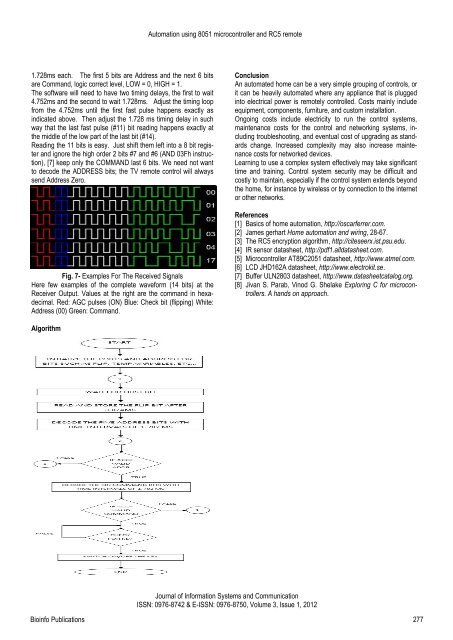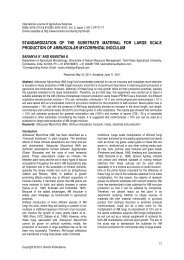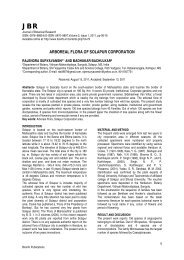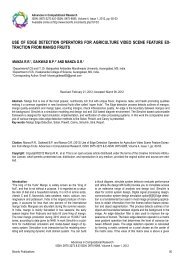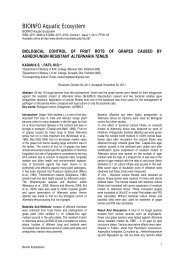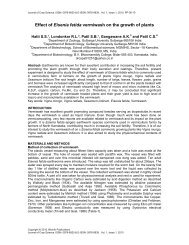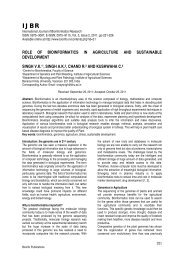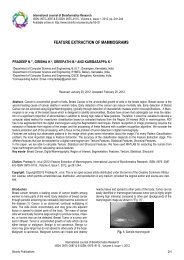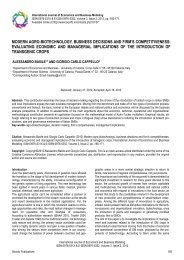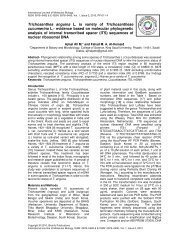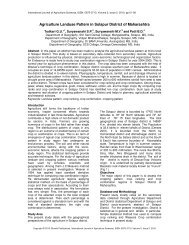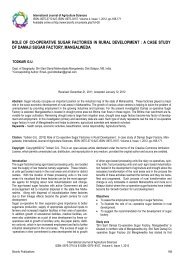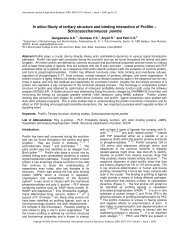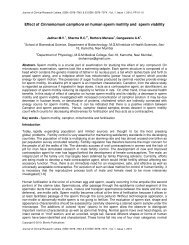automation using 8051 microcontroller and rc5 remote - Bioinfo ...
automation using 8051 microcontroller and rc5 remote - Bioinfo ...
automation using 8051 microcontroller and rc5 remote - Bioinfo ...
Create successful ePaper yourself
Turn your PDF publications into a flip-book with our unique Google optimized e-Paper software.
1.728ms each. The first 5 bits are Address <strong>and</strong> the next 6 bits<br />
are Comm<strong>and</strong>, logic correct level, LOW = 0, HIGH = 1.<br />
The software will need to have two timing delays, the first to wait<br />
4.752ms <strong>and</strong> the second to wait 1.728ms. Adjust the timing loop<br />
from the 4.752ms until the first fast pulse happens exactly as<br />
indicated above. Then adjust the 1.728 ms timing delay in such<br />
way that the last fast pulse (#11) bit reading happens exactly at<br />
the middle of the low part of the last bit (#14).<br />
Reading the 11 bits is easy. Just shift them left into a 8 bit register<br />
<strong>and</strong> ignore the high order 2 bits #7 <strong>and</strong> #6 (AND 03Fh instruction),<br />
[7] keep only the COMMAND last 6 bits. We need not want<br />
to decode the ADDRESS bits; the TV <strong>remote</strong> control will always<br />
send Address Zero.<br />
Fig. 7- Examples For The Received Signals<br />
Here few examples of the complete waveform (14 bits) at the<br />
Receiver Output. Values at the right are the comm<strong>and</strong> in hexadecimal.<br />
Red: AGC pulses (ON) Blue: Check bit (flipping) White:<br />
Address (00) Green: Comm<strong>and</strong>.<br />
Algorithm<br />
Automation <strong>using</strong> <strong>8051</strong> <strong>microcontroller</strong> <strong>and</strong> RC5 <strong>remote</strong><br />
Journal of Information Systems <strong>and</strong> Communication<br />
ISSN: 0976-8742 & E-ISSN: 0976-8750, Volume 3, Issue 1, 2012<br />
Conclusion<br />
An automated home can be a very simple grouping of controls, or<br />
it can be heavily automated where any appliance that is plugged<br />
into electrical power is <strong>remote</strong>ly controlled. Costs mainly include<br />
equipment, components, furniture, <strong>and</strong> custom installation.<br />
Ongoing costs include electricity to run the control systems,<br />
maintenance costs for the control <strong>and</strong> networking systems, including<br />
troubleshooting, <strong>and</strong> eventual cost of upgrading as st<strong>and</strong>ards<br />
change. Increased complexity may also increase maintenance<br />
costs for networked devices.<br />
Learning to use a complex system effectively may take significant<br />
time <strong>and</strong> training. Control system security may be difficult <strong>and</strong><br />
costly to maintain, especially if the control system extends beyond<br />
the home, for instance by wireless or by connection to the internet<br />
or other networks.<br />
References<br />
[1] Basics of home <strong>automation</strong>, http://oscarferrer.com.<br />
[2] James gerhart Home <strong>automation</strong> <strong>and</strong> wiring, 28-67.<br />
[3] The RC5 encryption algorithm, http://citeseerx.ist.psu.edu.<br />
[4] IR sensor datasheet, http://pdf1.alldatasheet.com.<br />
[5] Microcontroller AT89C2051 datasheet, http://www.atmel.com.<br />
[6] LCD JHD162A datasheet, http://www.electrokit.se.<br />
[7] Buffer ULN2803 datasheet, http://www.datasheetcatalog.org.<br />
[8] Jivan S. Parab, Vinod G. Shelake Exploring C for <strong>microcontroller</strong>s.<br />
A h<strong>and</strong>s on approach.<br />
<strong>Bioinfo</strong> Publications 277


